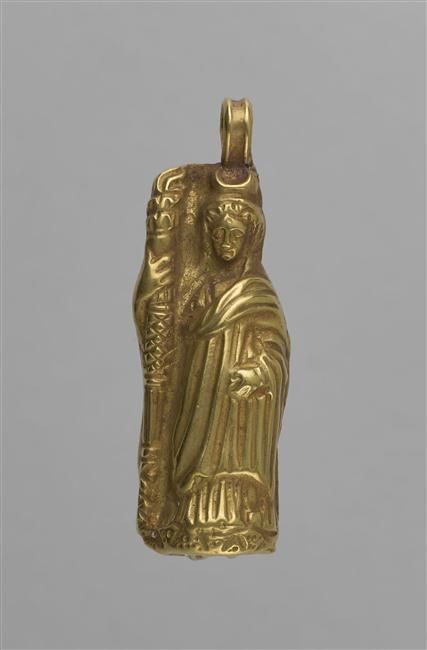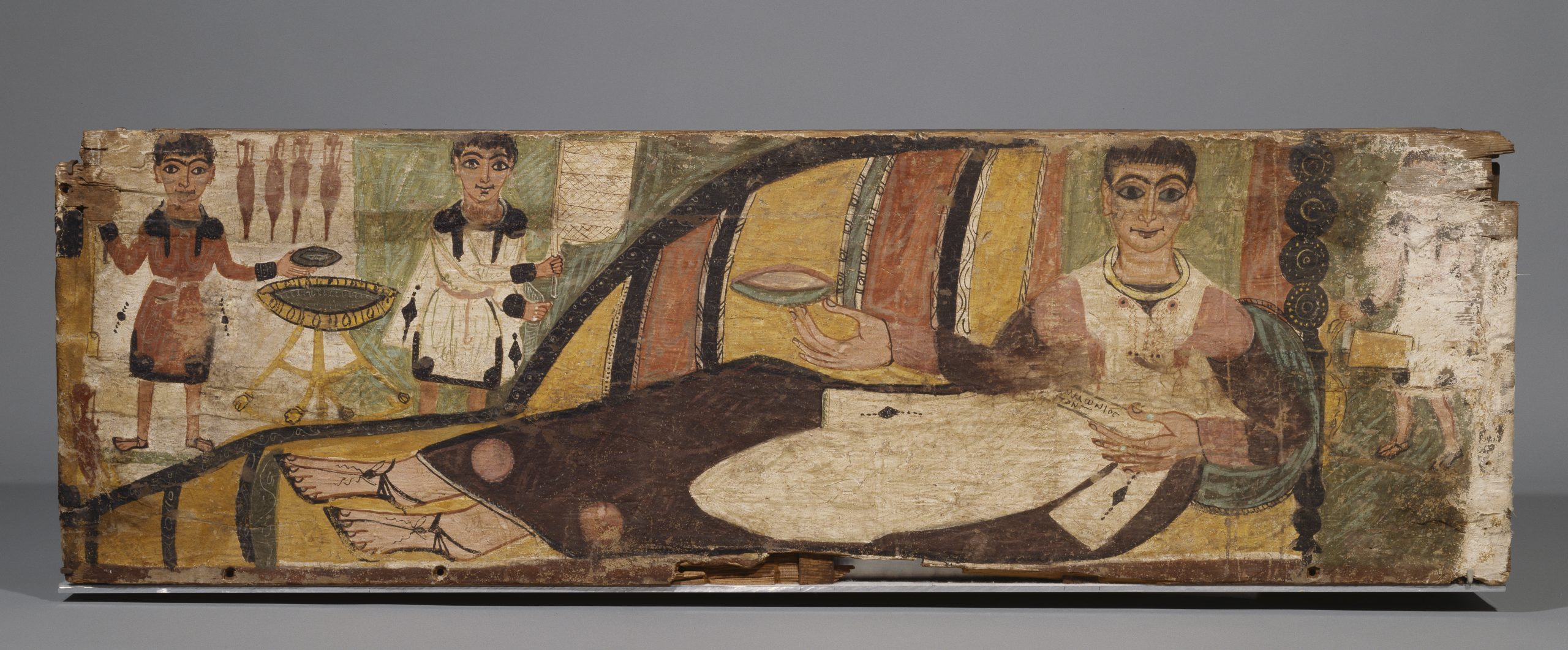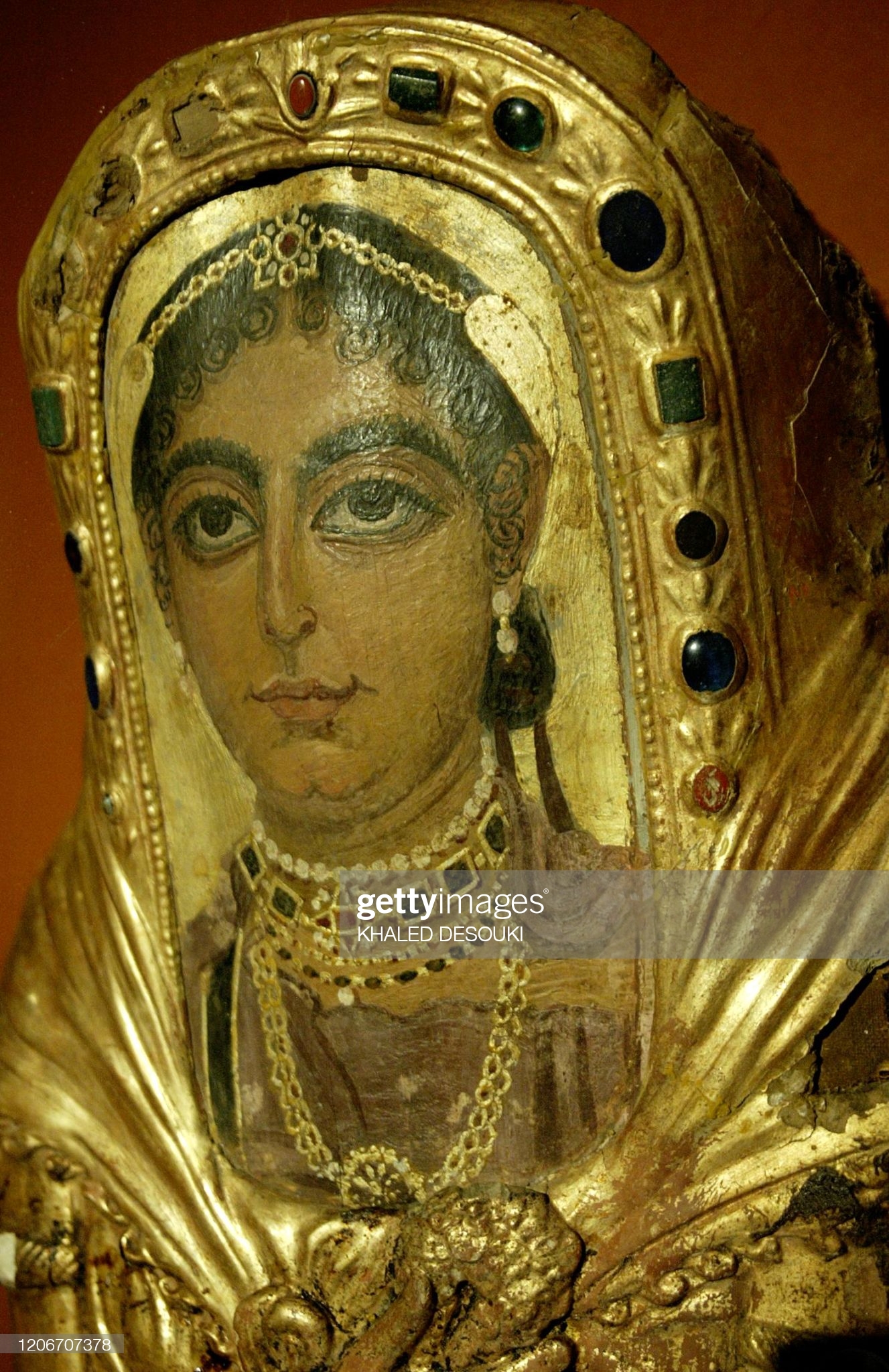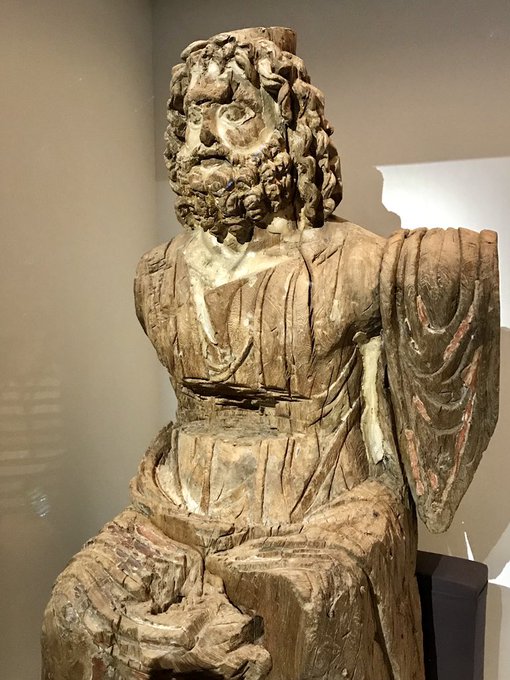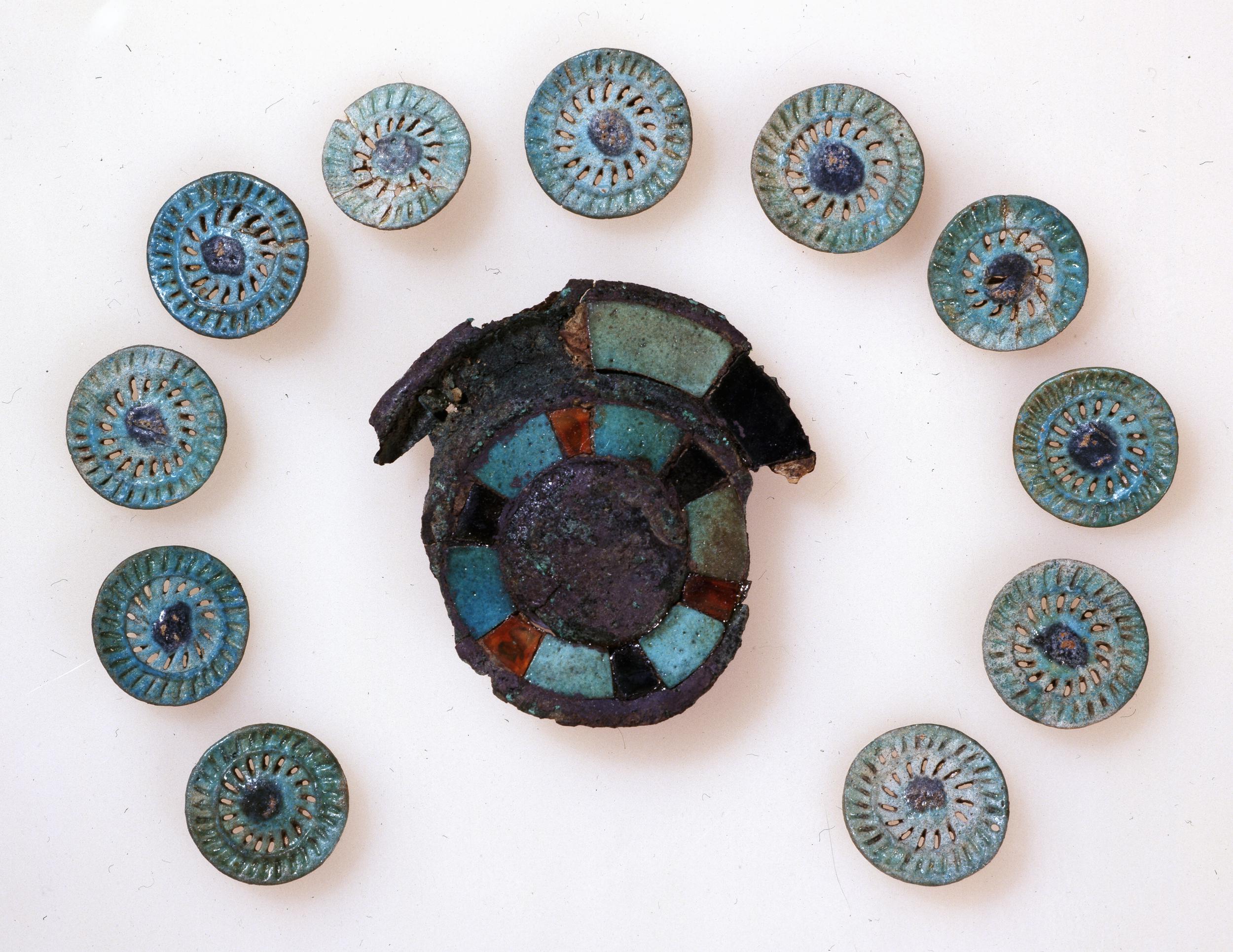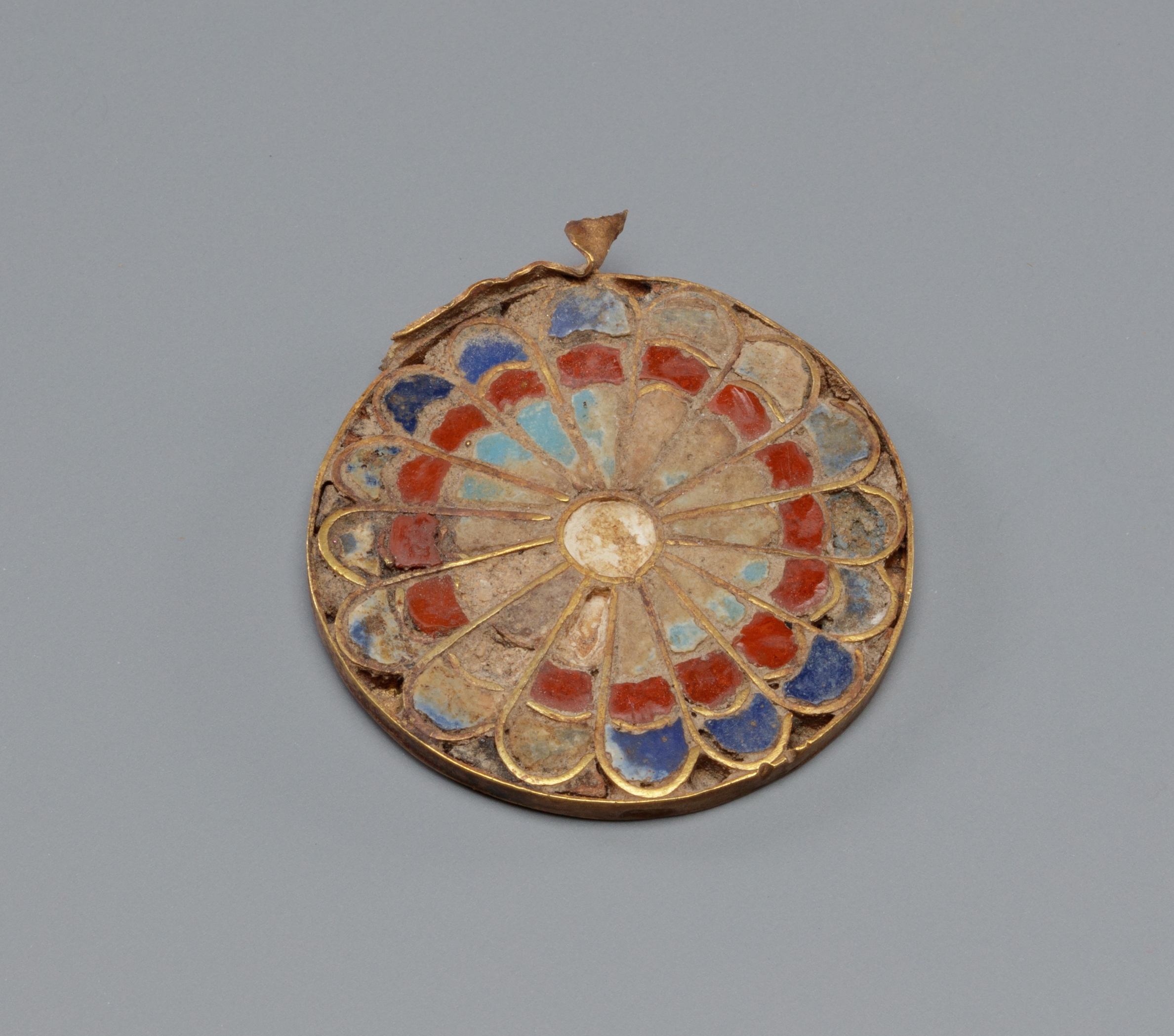Scroll of papyrus in the left hand (and a bracelet), long hair in the back, a representation similar to more than a few portraits of Palmyra. [compare http://colorsandstones.eu/2021/05/14/palmyra-funerary-relief-of-yarhay-and-his-servant-230-250-ce]

The wooden coffin from Abusir el-Melek (el-Meleq) Roman Period, Berlin ÄM 17126
© Staatliche Museen zu Berlin ÄgyptischesMuseum und Papyrussammlung / Jürgen Liepe
O. Rubensohn excavations, season 1904, tomb 13, chamber 12, coffin 3.
source:
Images of papyrus rolls in vignettes of the Book of the Dead; Mykola Tarasenko academia.edu


Found in the shrine coffin (Berlin ÄM 17126)
Photo Courtesy Rubensohn Archive at the university of Basel after
Marie Vandenbeusch, Coffins as statues? The study of cover British Museum EA 55022 from Roman Egypt
https://www.academia.edu
114 cm, probably for a child. A child is wearing a Greek outfit.
“The cover ÄM 17126 and its coffin ÄM 17127 were found in the tomb of the so-called priests of Harsaphes. This tomb contained twenty-one chambers with many burials dating from the late Ptolemaic period to the 1st century CE.”
“The child, generally interpreted as a boy, is depicted with short hair, a bun on top of the head, and long hair falling over the shoulders.
On this hairstyle, see Riggs 2005, 153–154. For similar buns that could also be worn by girls and women, see, for example, Grimm 1974, 45 and pl. 92.”


